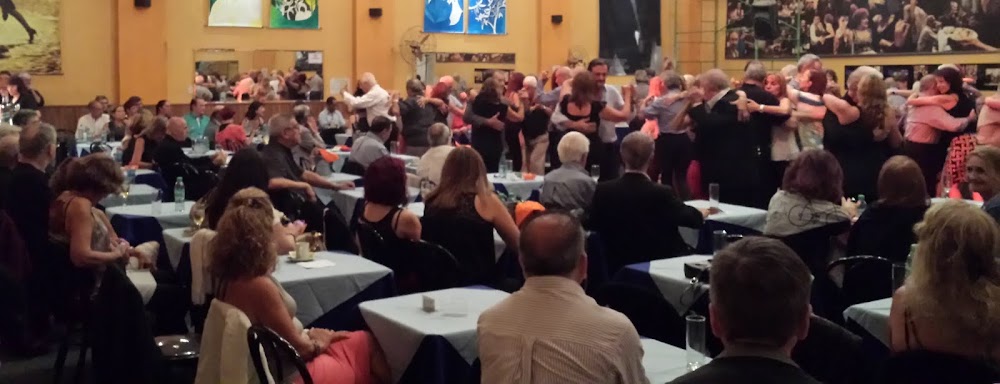Improvisation without pre-listening is the way I have chosen to learn the music. By "pre-listening" I means listening to tracks you are considering playing later in the set, on headphones, during the milonga. By "set" I mean the list of tracks played during the milonga. By "improvise" I mean choose music from groups of tracks. The smallest groups I use at present have three or four tracks, where it is difficult to place some tracks in any other grouping. The largest has 21 tracks.
I believe improvisation without pre-listening is probably the fastest, surest route to knowing the music and to independence from this kind of aide-memoire. For all my sets to date, bar the most recent, I pre-composed the set before the milonga. I pre-composed wholly for my first sets. Later sets were either wholly or partly pre-composed, by which I mean I sometimes used pre-composed tandas even if I didn't decide until during the milonga where those tandas would go in the set. Most DJs I have asked partially or wholly pre-compose tandas to use for the milonga and some pre-compose sets, especially if they also need to host or want to dance. A few improvise completely on the fly.
I chose to pre-compose my first sets because I am new to DJing and there were dancers and DJs present who cared about and knew enough about the music to ensure that I played the best set I could make at the time. Conditions between milongas - the dancers, their experience and musical knowledge, the venue, the numbers attending all differ widely. This being the case, I can learn to improvise at some milongas but not others.
The other reason I don't believe in pre-listening is because I believe in watching the floor - a lot. If you are pre-listening, you can't give the floor your full attention, and clearly when you are listening to the sound and volume on the headphones, you can't do the same for the room. Dancers give you silent feeback all the time. You can see how successful the track is in as far as who is dancing it and who is not, who sat down in the middle of a tanda, or who got up to dance mid-tanda and who is dancing the track well. You can see from peoples expressions how they find the length of your gap inbetween tracks, how they find the sound and volume. You can see if they like the cortinas and what they do during the cortinas.
Besides all this I get huge pleasure watching the floor when I'm DJing. I somehow feel more immersed in the ronda than when sitting, as a dancer, around it.

No comments:
Post a Comment